
In a world filled with modern marvels, there is something undeniably captivating about classic cars. Their timeless beauty and enduring appeal transport us to a bygone era of elegance and craftsmanship. Among the automotive elite, Jaguar stands tall, renowned for its ability to sculpt automotive art that roars with power and sophistication. Today, we embark on a journey to unveil the crown jewels of Jaguar’s classic car collection, shedding light on the legends that have left an indelible mark on the annals of automotive history.
Jaguar E-Type: The Epitome of Automotive Beauty
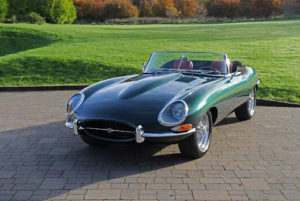
As the curtains lifted on the Jaguar E-Type at the 1961 Geneva Motor Show, the world stood in awe of its exquisite design. With its long, sweeping bonnet, curvaceous fenders, and tapered rear, the E-Type effortlessly captured the hearts of enthusiasts worldwide. Penned by aerodynamicist Malcolm Sayer, its streamlined form was a product of countless hours spent in the wind tunnel, resulting in an unprecedented drag coefficient for its time.
Beneath its stunning exterior lay a powerhouse. The E-Type featured a 3.8-liter inline-six engine derived from Jaguar’s successful D-Type race car. Its performance figures were astounding for the era, capable of reaching 150 mph (240 km/h) and sprinting from 0 to 60 mph (0 to 97 km/h) in under seven seconds. The combination of breathtaking design and exhilarating performance cemented the E-Type as an instant icon. The E-Type’s cultural impact must be balanced.
It became a symbol of the swinging sixties, epitomizing an era of freedom, glamour, and limitless possibilities. Notable owners included celebrities such as Steve McQueen and Frank Sinatra, further solidifying its status as the ultimate expression of automotive beauty.
Jaguar XKSS: The Resurrection of a Legend
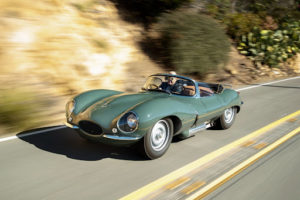
The Jaguar XKSS, born from the ashes of the illustrious D-Type, occupies a unique place in automotive history. Originally designed for motorsport dominance, Jaguar made the audacious decision to convert the remaining unfinished D-Type chassis into road-legal machines. The result was the XKSS, an exquisite blend of race-bred performance and road-going grandeur. The exclusivity of the XKSS models was as rare as their inherent beauty, with a mere 16 of these masterpieces ever crafted.
These limited numbers contributed to their highly sought-after status among automotive enthusiasts. Imbued with Jaguar’s commitment to uncompromising luxury, the XKSS showcased an exquisite blend of handcrafted aluminum bodywork and an indulgent leather interior. Every inch of the car exuded opulence, standing as a testament to Jaguar’s unwavering pursuit of refined elegance, even within the realm of high-performance sports cars. The XKSS’s significance lies not only in its rarity but also in its historical impact. In 1957, a tragic fire at Jaguar’s factory destroyed nine of the planned 25 D-Type production cars. The rebirth of these lost machines as XKSS models is a testament to Jaguar’s resilience and determination to preserve its racing heritage.
Jaguar Mark 2: Timeless Sophistication and Power
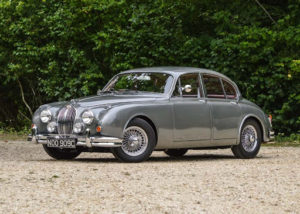
Introduced in 1959, this distinguished sports saloon quickly established itself as the epitome of British luxury. With its sleek lines, polished chrome accents, and graceful proportions, the Mark 2 exuded an air of refinement that set it apart. Beneath its graceful exterior, the Mark 2 presented a variety of engine choices, including the renowned 3.8-liter straight-six powerhouse that also propelled the iconic E-Type.
The Mark 2 boasted remarkable performance capabilities, achieving top speeds that surpassed 120 mph (193 km/h) and accelerating from 0 to 60 mph (0 to 97 km/h) in approximately 8 seconds.What truly set the Mark 2 apart was its status as a pioneering sports saloon. It introduced features like disc brakes on all four wheels, a luxurious interior with ample seating and wood veneer accents, and advanced suspension technology that provided a smooth and composed ride.
The Mark 2 became a favorite among both executives and drivers seeking a perfect blend of comfort and performance. Decades later, the Mark 2’s timeless appeal continues to captivate enthusiasts and collectors. Its iconic design and reputation for performance have made it a sought-after classic car, admired for its ability to transport drivers to an era of opulence and refined motoring.
Jaguar D-Type: Racing Dominance on the Track
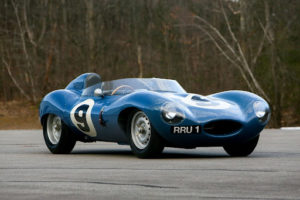
When it comes to racing legends, few cars can match the pedigree of the Jaguar D-Type. Built with one goal in mind—to dominate the world of motorsport—the D-Type delivered unrivaled performance on the track and left an indelible mark on Jaguar’s racing history. Introduced in the mid-1950s, the D-Type featured an aerodynamic design that was years ahead of its time.
With its long, curvaceous body, finned tail section, and revolutionary monocoque construction, it sliced through the air with minimal drag. Underneath the sleek exterior, the D-Type boasted advanced engineering, including disc brakes and a dry-sump lubrication system. The D-Type’s success on the track was undeniable. It clinched three consecutive victories at the 24 Hours of Le Mans from 1955 to 1957, solidifying Jaguar’s dominance in endurance racing.
The D-Type’s triumphs were not limited to Le Mans, as it showcased its prowess in various other prestigious races around the world. Each D-Type produced was meticulously hand-built, ensuring the highest level of craftsmanship. Today, these racing marvels command astronomical prices at auction, and their rarity adds to their mystique and allure among collectors and racing enthusiasts alike.
Jaguar XJ220: A Supercar Beyond Its Time
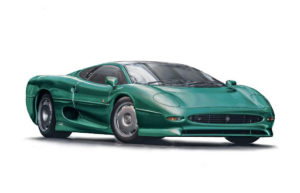
In the world of supercars, the Jaguar XJ220 stands tall as a testament to automotive ambition and technological innovation. Unveiled in 1992, this mid-engined marvel pushed the boundaries of what was possible, catapulting Jaguar into the elite realm of hyper-performance machines. The XJ220’s striking design turned heads wherever it went. Its low-slung silhouette, aggressive stance, and aerodynamic lines evoked a sense of speed even at a standstill. Underneath the sleek bodywork resided a 3.5-liter twin-turbocharged V6 engine, initially designed for motorsport purposes.
This powerplant delivered an astonishing 542 horsepower, propelling the XJ220 to a top speed of 217 mph (349 km/h). Beyond its impressive performance figures, the XJ220 boasted groundbreaking technologies for its time. It featured an advanced aluminum honeycomb monocoque chassis, four-wheel drive, and a sophisticated active suspension system. These innovations contributed to its remarkable handling characteristics, ensuring a thrilling driving experience that matched its formidable power. Despite facing challenges during its production journey and falling short of the originally planned V12 engine, the XJ220 left an indelible mark in automotive history. Its limited production run of just 281 units further solidified its exclusivity and ensured its status as a highly sought-after collector’s item.
These classic cars not only possess breathtaking beauty but also embody the spirit of their respective eras. The E-Type captures the essence of the swinging sixties, a time of rebellion and free-spiritedness. The XKSS embodied the resilience and determination of Jaguar, rising from the ashes to become a symbol of exclusivity and craftsmanship. The Mark 2 exuded the refined elegance and sophistication of the mid-20th century, where luxury and performance merged seamlessly. As fow the D-Type, it represented the pinnacle of racing dominance, with its victories etched in the annals of motorsport history. While each car was a masterpiece in its own right, they shared a common thread—a commitment to pushing boundaries and redefining what is possible. Jaguar’s relentless pursuit of excellence and innovation shines through in every curve and engine roar.
Today, these classic Jaguars continue to captivate the hearts of enthusiasts and collectors worldwide. Their rarity and historical significance make them highly sought-after treasures, commanding top prices at auctions and gracing the collections of automotive connoisseurs. So, the next time you catch a glimpse of a classic Jaguar gliding down the road, take a moment to appreciate the roaring elegance that these legendary cars represent—a testament to the unwavering pursuit of automotive excellence and the enduring allure of timeless design.
If you like this article, please share it with your friends.

